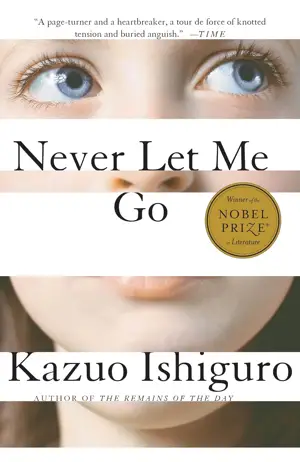Never Let Me Go

Kazuo Ishiguro's Never Let Me Go unfolds through Kathy's introspective and nostalgic narration as she reflects on her upbringing. Her friendships and the unsettling truth about their existence are all part of such introspection. It becomes clear that Kathy, Ruth, Tommy, and their fellow students are clones. Society makes clones like the three for the sole purpose of providing organ donations to "normal" humans.
As the characters transition from Hailsham to a nearby farm called the Cottages. And later to the more clinical environment of the "donations center. They grapple with their identities, the limited time they have left, and the concept of their mortality. Kathy witnesses the physical and psychological toll the donation process takes on her friends.
The central narrative in Never Let Me Go revolves around Kathy's complicated relationships with Ruth and Tommy. Ruth, initially portrayed as self-assured and manipulative, becomes a source of tension between Kathy and Tommy. They navigate their feelings for each other cautiously. Their intertwined love triangle explores themes of love, jealousy, and the search for connection and purpose in their predetermined existence.
Never Let Me Go is Ishiguro's sixth novel and he pursues the theme of artificially raised life further in his next novel, Klara and the Sun.